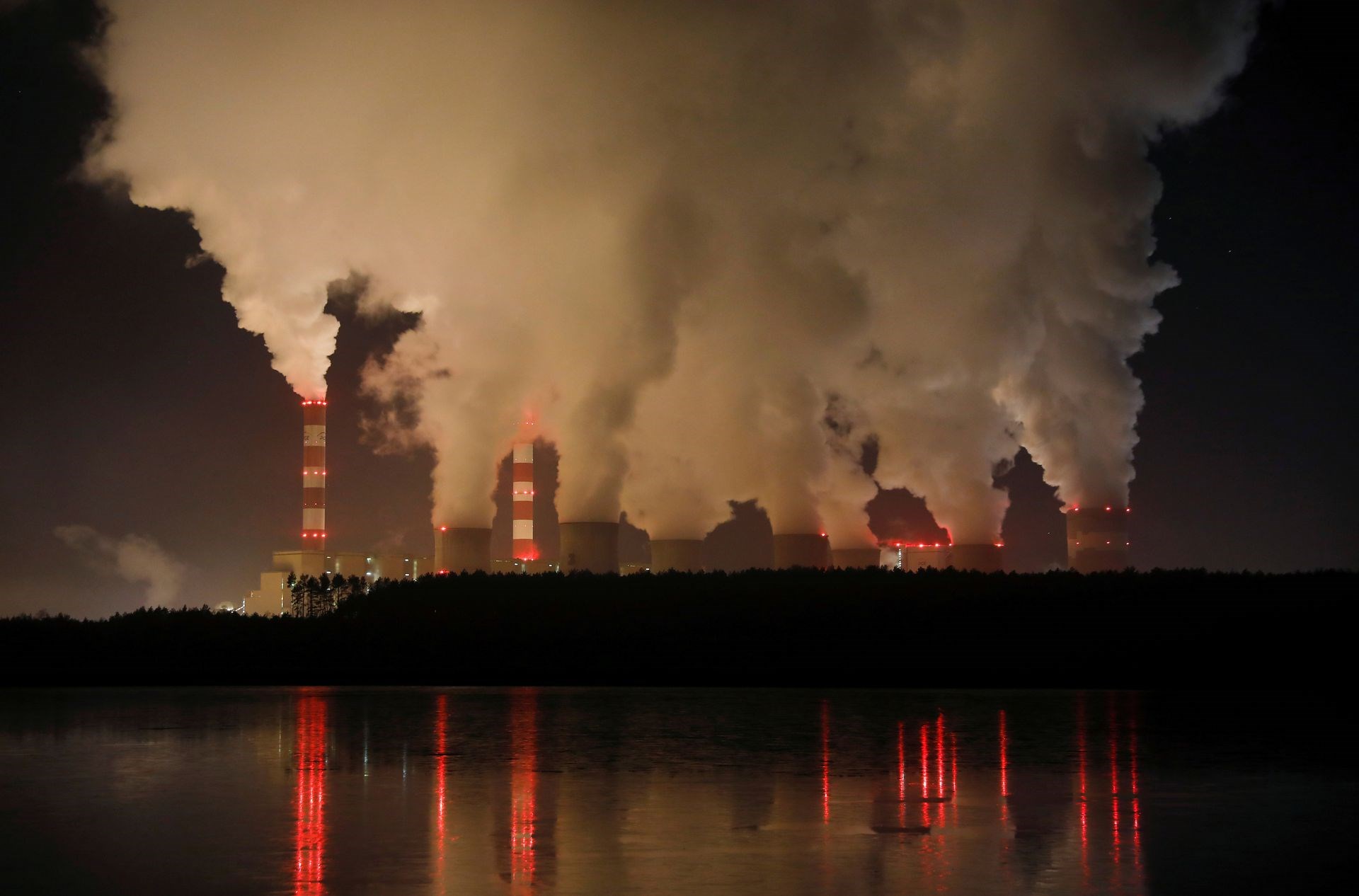In a first, greenhouse gases, wildfire link finally quantified
Using climate modeling, the team finds that emissions from the Big 88, including ExxonMobil, BP, Chevron, and Shell, were responsible for roughly half of the observed warming.
-

Smoke and steam billows from Belchatow Power Station, Europe's largest coal-fired power plant operated by PGE Group, at night near Belchatow, Poland December 5, 2018. (Reuters)
In a first, US climate scientists have determined how much the main fossil fuel producers' greenhouse gas emissions have contributed to wildfires.
More than a third of the land burnt by forest fires in western North America during the previous 40 years was attributed to carbon dioxide and methane emissions from the so-called Big 88 companies, according to their research, which was published in Environmental Research Letters on Tuesday.
First author Kristina Dahl, of the Union of Concerned Scientists (UCS), said, as quoted by AFP, that wildfires in the western United States and southwestern Canada have been worsening for decades: they are burning more intensely, over longer seasons, covering larger areas and reaching higher elevations.
Since the general public is now responsible for paying the majority of the costs associated with rebuilding and boosting resilience, "we wanted to better understand the role that fossil fuel industry emissions have had in altering the wildfire landscape," she added.
"We really wanted to put a spotlight on their role in that, so that they can be held accountable for their fair share of the cost," she added.
Food insecurity, air intoxication, diseases, drought, and deteriorated worker productivity are just some of the effects that the #climatecrisis has so far triggered on a global scale. pic.twitter.com/VeSFgFfrQL
— Al Mayadeen English (@MayadeenEnglish) October 28, 2022
The big 88
Using climate modeling, the team decided that emissions from the Big 88, including ExxonMobil, BP, Chevron, and Shell, hold accountability for raising global average temperatures by 0.5°C since the start of the 20th century, which roughly accounts for half of the observed warming.
For the objectives of this analysis, the authors took into account all fossil fuel emissions, including those from activities like extraction and flaring, as well as refining and usage inside a vehicle.
The corporations' contribution to global warming was then used to determine how much they contributed to an increase in western North America's "vapor pressure deficit," or VPD, a measurement of air's capacity to pull water out of plants and soils.
Climate change's rising temperatures also result in a rise in this indicator of atmospheric thirst because warmer air can store more water vapor.
A higher VPD makes an area more fire-prone, and recent research has determined a clear exponential linkage between increases in this aridity indicator and the area burned by forest fires.
A number of other causes, such as vigorous fire suppression that resulted in vast buildups of vegetation that would have typically burnt in smaller, more frequent fires, frequently controlled by Indigenous people, have contributed to the increase in fire hazard conditions during the last century.
It is worth noting that the study adds to a growing number of climate "attribution" studies that have shown the relative contributions of rising global temperatures, rising sea levels, and acidification of the oceans to greenhouse gas emissions from burning fossil fuels.
The UCS is advocating for government inquiries into previous and current industry misinformation tactics intended to refute climate research that was foreseen by the businesses' own internal modeling.
Read next: Bishop of Oxford: Fossil fuel companies should be held accountable

 3 Min Read
3 Min Read








